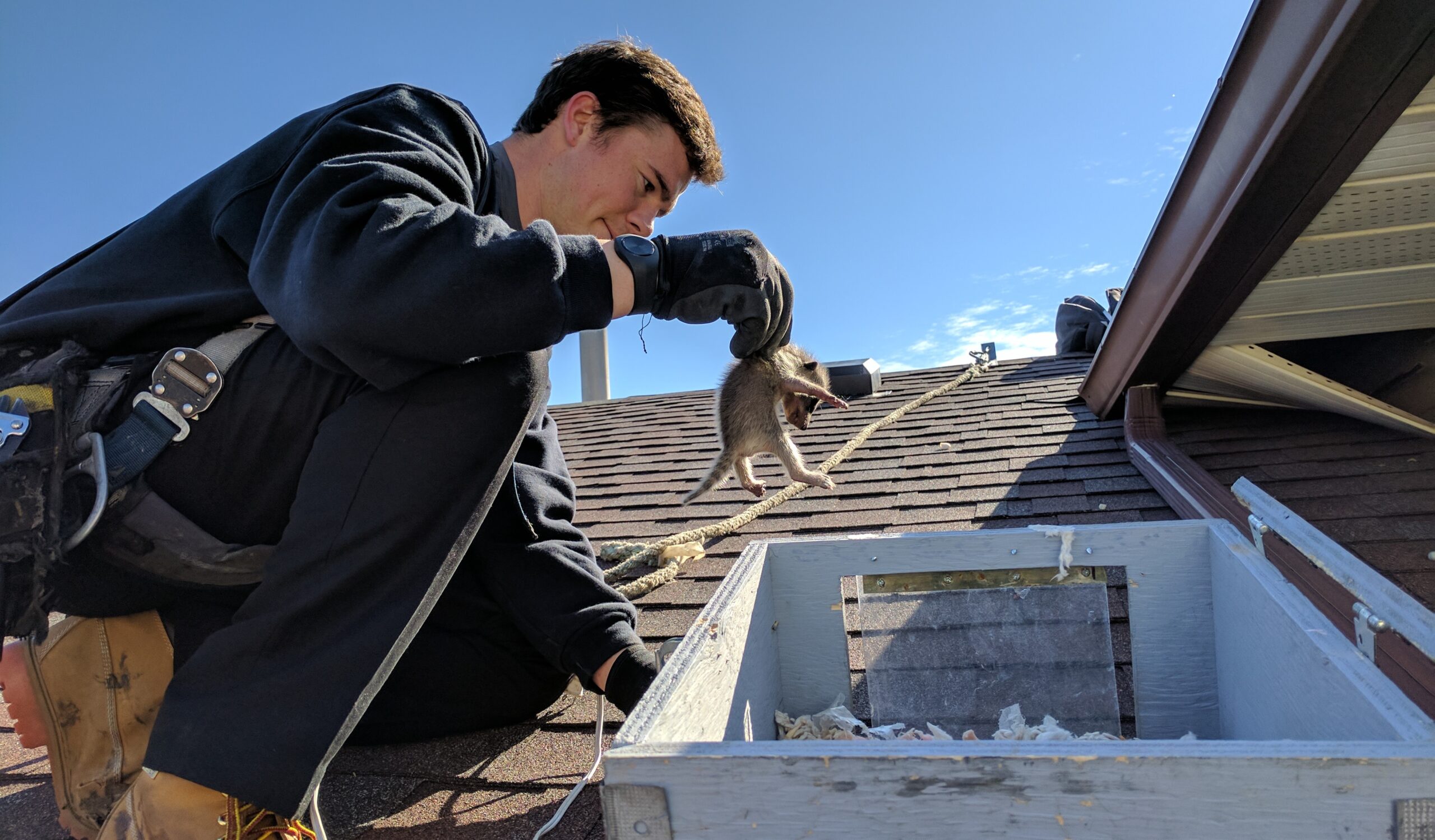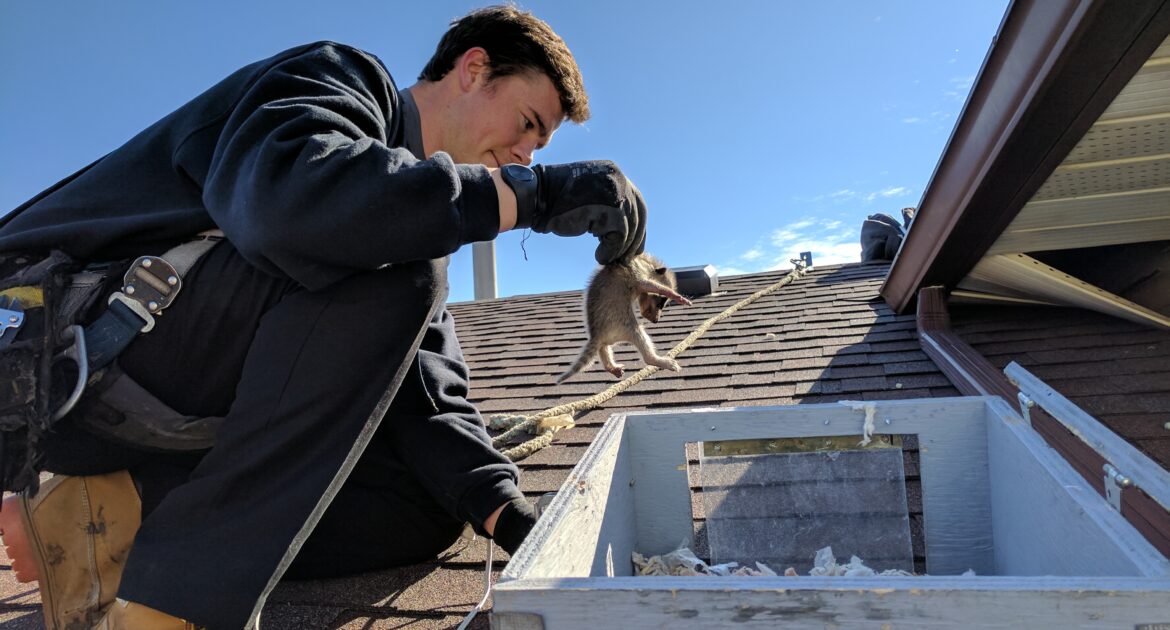If you live in Columbus and have recently dealt with raccoon roof damage, you’re in good company—these clever animals are notorious for finding ways into homes. Wondering how do raccoons get into your house or how to keep raccoons off your roof for good? It turns out, they’re expert climbers and problem solvers who can exploit weaknesses in your home’s structure that you might not even know exist. Today, I’m sharing five surprising entry points that raccoons commonly use, so you can better protect your home and avoid costly damage.
1. Roof Vents
Roof vents are one of the most common ways raccoons gain access to attics. These vents are designed to allow air to circulate and prevent moisture buildup in your roof, but their sturdy appearance can be deceiving. Soft plastic or thin metal coverings make them an easy target for a raccoon’s strong teeth and dexterous paws. Once they break through, the vent provides a clear entryway into your attic.
Raccoons are especially drawn to roof vents during the colder months as they search for warmth and shelter. If you’ve noticed unusual noises coming from above your ceilings—like scampering or scratching—it’s possible that a raccoon has already made its way through one of these vents. Skipping regular inspections can also lead to small vulnerabilities going unnoticed until it’s too late.
Over the years at Skedaddle, we’ve removed countless raccoons from homes where roof vents were the entry point. It’s one of the most precarious places for damage because once a raccoon enters, they can trample your insulation, chew through wiring, and leave behind droppings that pose health risks. Investing in raccoon-proof vent covers is a great way to enhance your home’s security, but if you suspect raccoons have already moved in, it’s time to call professional wildlife control services.
2. Chimneys
What may seem like a decorative feature to you is basically an open invitation to raccoons. Chimneys are an ideal hideaway because they mimic a hollow tree—a natural den for raccoons in the wild. Most modern chimneys come equipped with caps or covers, but older ones or those with loose or broken caps can provide an easy entrance.
Raccoons are exceptional climbers and can scale even steep-sided homes with ease, often using siding, downspouts, or nearby trees to make their way onto the roof. Once they reach the chimney, they can maneuver their way inside to nest. Mother raccoons particularly like chimneys for rearing their young because they’re well-protected from predators and the elements.
If left unchecked, raccoons living in your chimney can contaminate the area with droppings, which may carry harmful parasites like roundworms. They can also scratch and damage the flue or fireplace, leading to costly repairs. Our team at Skedaddle often finds homeowners in disbelief when we reveal that their fireplace was used as a makeshift den for weeks. Installing a durable chimney cap and inspecting it regularly is the best solution to prevent this from happening.
3. Fascia Boards and Loose Siding
Fascia boards and siding are surprisingly easy targets for raccoons, especially in aging homes where weathering has caused these materials to weaken over time. Fascia boards—the wooden or metal panels that cover the edges of your roof—can be pried open by a determined raccoon looking to squeeze its way inside.
Similarly, loose or damaged siding can also serve as a gateway into your home. Raccoons only need a small opening, around four inches wide, to begin their work. Once inside, they can cause a range of issues, from damaging insulation to leaving behind foul odors that seep into your living spaces.
At Skedaddle, we’ve seen cases where homeowners were completely unaware of raccoon activity until our inspections revealed telltale signs like claw marks or tufts of fur caught in loose siding. The best defense against these entry points is to conduct routine inspections of your home’s exterior to identify weak spots and repair them promptly. Sealing gaps with heavy-duty materials can make a big difference in deterring raccoons.
4. Roof Edges and Eaves
The edges of your roof and the eaves—where your roof meets the exterior walls—are another weak point that raccoons commonly target. Over time, exposure to the elements can cause these areas to break down, creating gaps that raccoons can exploit. Their sharp claws and teeth allow them to widen these openings, giving them an easy path into your attic.
Eaves with improper ventilation or soffit gaps—small openings that allow air to flow—are particularly vulnerable. For raccoons searching for warmth or a safe nesting site, these spots are irresistible. Once they’ve entered your attic, raccoons are capable of wreaking havoc. They can tear apart ductwork, contaminate insulation with droppings, and even destroy stored items as they build their den.
When inspecting homes in Columbus, we’ve often noticed that raccoons are drawn to eaves located near trees or power lines, which serve as convenient highways for wildlife. Trimming back branches and securing loose eaves with heavy gauge screens or metal reinforcements is a vital step in preventing raccoon roof damage.
5. Gaps Around Roof Junctions and Skylights
You may not think of skylights or roof junctions—the spots where two sections of a roof meet—as potential risks, but they are prime entry points for raccoons. These areas often feature flashing or sealants that can weaken over time, creating gaps that raccoons can exploit. Skylights, in particular, can be appealing because of the mix of warmth and light they provide.
Over the years, we’ve seen homes in Columbus with significant damage where raccoons had clawed away at the edges of skylights or pried up loose shingles near roof junctions. These entry points not only allow raccoons inside but can also lead to secondary issues like leaks or weather-related damage.
If you want to know how to keep raccoons off your roof and out of your skylights, routine maintenance is key. Replace damaged or aging materials promptly and use reinforced flashing around roof junctions. Skylights should also be inspected regularly to ensure seals remain intact and secure.
Keep Raccoons Off Your Roof with Skedaddle
At Skedaddle, we’ve been in the wildlife control business for over 30 years. Our professional technicians are trained to identify all potential entry points and secure them effectively. Unlike DIY approaches that can lead to incomplete solutions or safety risks, we offer a comprehensive process that includes humane removal, damage repair, and prevention measures to keep raccoons out for good.
We take pride in offering a humane and reliable solution that prioritizes both your home and the wildlife we encounter. If you’ve been dealing with raccoon issues in Columbus, don’t wait until the damage is too great—reach out to Skedaddle today. Together, we can protect your home and restore your peace of mind.
Take Proactive Steps to Protect Your Home from Raccoon Roof Damage
Raccoons are creative problem solvers that can exploit vulnerabilities in your home’s structure before you even notice. By understanding these five surprising entry points—roof vents, chimneys, fascia boards, roof edges, and skylights—you can take proactive steps to protect your home from raccoon roof damage. Inspections and repairs are crucial, but when you want the job done right, it’s time to call in the experts.
If you suspect raccoons have already made their way into your home, contact Skedaddle. Our experienced, humane wildlife control team will ensure your home is secure and raccoon-free.




